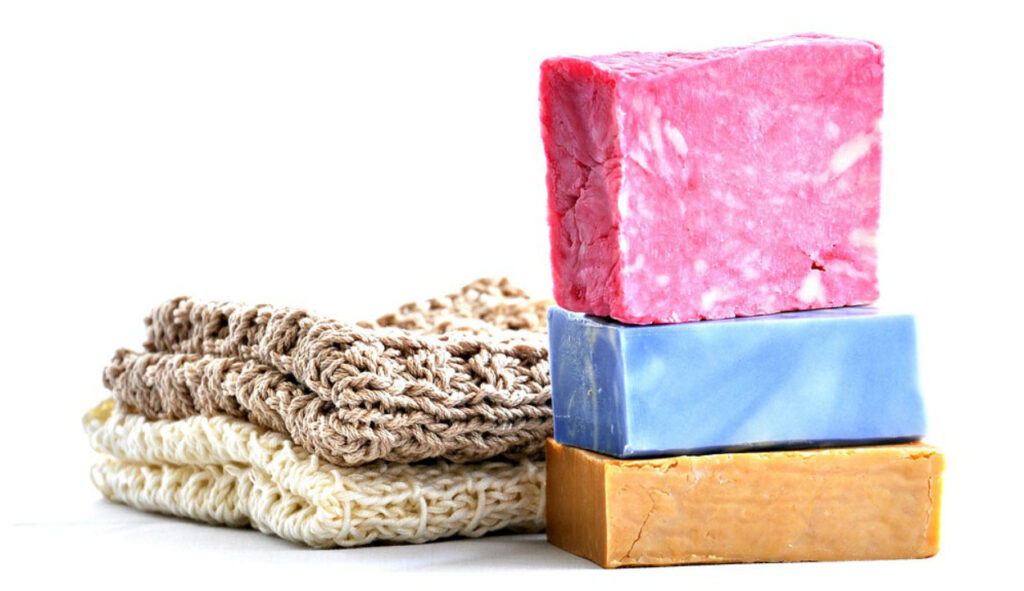Simplifying Daily Life with Planners and Checklists
Ever feel like the day slips by without accomplishing anything? You’re not alone. Juggling household chores, meal planning, and just trying to keep it all together can be overwhelming. That’s where checklists and planners come in. They aren’t just for corporate types or students—homemakers can benefit too.
For large families, using a planner may seem like more work at first. But it’s really not, and it will save you time and headaches in the long run. Delay planning today and face disorder tomorrow. Isn’t that usually how it goes?
- Checklists are your roadmap to a more organized life, breaking down tasks into manageable steps.
- Planners let you tailor your day, week, or month—all on paper, making everything crystal clear. Imagine the relief of ticking off tasks from your list or seeing a plan for meals and groceries that frees up your mental space.
- Efficiently managing chores means less stress and more time for what truly matters.
- Streamlining grocery shopping with a planner reduces last-minute trips to the store. What’s not to love about minimal living, where decluttering brings peace and clarity to your household?
Below, you’ll find practical tips for getting started with checklists and planners, transforming your daily routines into smooth sailing. Ready to feel more productive and less frazzled? Let’s dive in.
The Power of Checklists
When used correctly, checklists provide order and a sense of accomplishment, both of which can be very rewarding in a homemaker’s packed agenda. They offer a simple yet effective way to organize tasks and manage time. Let’s explore how checklists can transform your productivity and household management.
Organizing Household Chores and Tasks
Keeping a clean and orderly home can be challenging, but checklists simplify this process. Have you ever found yourself forgetting to clean under the couch or consistently pushing back laundry day? Creating specific and detailed checklists for household chores can help to ensure nothing is overlooked.
As a starting point, here are some simple ideas for your household checklists:
- Weekly Cleaning Schedule:
- Monday: Vacuum living room and bedroom
- Tuesday: Clean bathroom and change towels
- Wednesday: Dust all surfaces and clean mirrors
- Thursday: Wash and change bed linens
- Friday: Mop kitchen and bathroom floors
- Saturday: Organize the pantry and clean out the refrigerator
- Sunday: Restock cleaning supplies and review the checklist
- Laundry Routine:
- Sort laundry into whites, colors, and delicates
- Pre-treat any stains
- Wash the whites first, followed by colors and delicates
- Dry and fold each load promptly
- Put away clothes instead of letting them pile up
- Maintenance Tasks:
- Check smoke detectors monthly
- Clean HVAC filters bi-monthly
- Inspect and unclog gutters every season
- Schedule bi-annual pest control treatments
Do the above checklists sound overly simple? That’s because they are. Simple checklists are better than no checklists, so these will be a great start if you’re not accustomed to using them. Also, if you have children, they can benefit from the discipline of using checklists.
Enhancing Productivity with Task Lists
A busy day can quickly become overwhelming without a clear plan. Task lists help map out responsibilities, making it easier to manage your time efficiently. Whether daily, weekly, or both, these lists are an essential tool for staying on track and reducing stress.
Consider these tips for effective task management:
- Daily Task Lists:
Start each morning with a list of what you need to accomplish. Prioritize tasks based on urgency and importance. A typical daily list might include:- Complete homeschooling admin tasks by noon
- Prepare lunch for the family
- Pick up groceries after school
- Help kids with homework
- Quick evening workout
- Evening reading and prayer
- Weekly Task Lists:
Use the end of your week to plan for the next one. This helps in setting long-term goals and breaking them into smaller, more manageable tasks. A typical weekly checklist might include:- Meal planning and grocery shopping
- Paying bills and budgeting
- Scheduling appointments or meetings
- Planning a family activity for the weekend
- Deep cleaning a part of the house, like the garage or basement
Checklists simplify life by providing structure and clarity. They allow you to focus on one thing at a time and easily track the completion of each task. They help ensure that nothing important slips through the cracks, and they can boost both your household management and personal productivity for these reasons.
Meal Planning and Grocery Shopping Made Easy
Meal planning and grocery shopping can become overwhelming if not approached with a systematic strategy. Fortunately, a few simple strategies like creating weekly meal plans and organized grocery lists make these tasks far more manageable.
Streamlining Meal Planning
Creating a weekly meal plan is a must and will save a copious amount of time in the long run. Planning out your meals reduces the need to make decisions about what’s for dinner every night.
In the past, we’ve spent a lot of time trying to decide what we should have for dinner on any given night. Then, we got a bit more organized and won our time back. That said, these things are always a work in progress.
Benefits of weekly meal planning include:
- Reduces stress: Knowing what you’ll eat each day can take a load off your mind.
- Saves time: Shopping for a week’s worth of groceries at once means fewer trips to the store.
- Healthy eating: You can balance your diet better when you plan ahead. No more random, unplanned junk food nights.
- Saves money: Reduces impulse buys and food waste.
Why fly by the seat of your pants when you can have a clear roadmap for your meals?
Effective Grocery Shopping Lists
Organizing grocery lists is crucial for matching meal plans. An effective grocery list isn’t just a random collection of items; it’s a well-thought-out strategy that can ultimately save you money and time.
Tips for creating organized grocery lists:
- Break it down by categories: Separate items into categories such as produce, bread and pasta, animal proteins (eggs, dairy, meats, etc.), frozen foods, etc. This will streamline your shopping trip, making it quicker and less stressful.
- Align with your meal plan: Match your list directly with what’s planned for the week. Cross-reference each meal to make sure you’re not missing any crucial ingredients. If you have a large family like we do, it can be easier to plan for longer than one week so you can buy in bulk.
- Prioritize fresh produce: Always start with fresh ingredients. This ensures you focus on healthy choices first before moving on to non-perishables.
- Take stock of your pantry: Check what you already have at home before writing down what you need. This avoids duplicate purchases.
- Be flexible, but stick to the essentials: Sometimes, sales or seasonal items might change the plan a bit. However, keeping the core of your list unchanged helps maintain structure.
Creating an effective list will not only save you time but also streamline your entire shopping experience.
Planning meals and aligning them with an organized grocery list are golden steps toward a stress-free, efficient household.
Decluttering and Minimalist Living Strategies
Life can be chaotic, but bringing order and simplicity to your home can make a significant difference. By blending effective decluttering techniques, organizational techniques, and minimalist living, you’ll start to regain control and get back to being comfortably organized.
Creating a Decluttering Checklist
Decluttering different areas of your home can feel overwhelming, but breaking it down into manageable steps can make it easier. Use a checklist to keep track of your progress and stay organized.
Here’s a step-by-step guide to help you out:
- Identify Target Areas: List the main areas of your home that need decluttering, such as the kitchen, bedroom, and living room. Break these down into smaller sections if needed.
- For example, in the kitchen, you can have sections like the pantry, cabinets, and refrigerator.
- Set a Decluttering Schedule: Allocate specific days or hours to target each area. Consistency is key.
- Monday: Kitchen Pantry
- Tuesday: Living Room Shelves
- Sort Items: Use the “Four-Box Method.” Label four boxes or bags: Keep, Donate, Trash, and Relocate. This method helps in deciding what to do with each item efficiently.
- Keep items you frequently use and love.
- Donate items in good condition but no longer needed.
- Trash unrecyclable and unusable items.
- Relocate items that belong in another part of your home.
- One-in-One-out Rule: For every new item you bring in, try to get rid of one. This helps maintain balance and prevent clutter from accumulating again.
- Final Sweep: After you’ve gone through your checklist, do a final sweep to ensure everything is in its place or on its way out.
Remember, decluttering is a process that stems from the mindset of an organization. Once you remove the clutter, you need to have the proper mindset to ensure it doesn’t build up again.
Embracing Minimalism with Planners
While it might seem odd at first if you’re not used to using them, planners can support your minimalist lifestyle. Planners aren’t just for scheduling—they’re effective tools for maintaining simplicity and keeping track of physical and mental clutter.
- Tracking Possessions: Use sections in your planner to list relevant possessions, especially those in chaotic areas like your closet or kitchen.
- Create categories and log what you have.
- When you see it all written down, it’s easier to identify what you don’t need.
- Logging your possessions will give you an altogether different perspective when it comes to determining what you really need and even what you want
- Minimalist Goals: Setting goals can help you stick to your minimalist lifestyle. For example, set a goal not to buy any new clothes for three months.
- Use your planner to track your progress and note any challenges or successes.
- Use your planner to journal and write down any thoughts or struggles you have along the way.
- Daily/Weekly Reflection: Take a few minutes each day or week to reflect on what you’ve used and what you haven’t.
- Write down items that didn’t get used and consider whether you truly need them.
- Write down a few ideas for things you may be able to give away.
- Declutter Days: Schedule specific days in your planner dedicated solely to reviewing and downsizing your possessions. This routine prevents clutter buildup and ensures you keep what you use, not what you don’t.
By integrating decluttering steps and the power of planners, you can successfully simplify your daily life. It’s all about consistent effort and mindful decisions. Many of the available PDF planner options have built-in checklists, trackers, and journals for a variety of purposes, plus you can even print them if that’s your preference.
Digital vs. Paper Planners
Navigating the array of options between digital and paper planners can feel overwhelming. Yet, finding the right tool for your organizational needs is crucial for ensuring you’re keeping up with your daily tasks efficiently. Here’s a structured guide to help you decide which planner fits better with your lifestyle.
Choosing the Right Planner for Your Needs
Each type of planner has its own unique advantages and may cater to different preferences and situations, so it’s worth your time to consider a few options. It might involve some trial and error as well until you decide what works best for your lifestyle.
Digital Planners:
Digital planners have soared in popularity due to their convenience and integration with tech-savvy lifestyles. Here are some key benefits:
- Accessibility: You can quickly access your plans from your smartphone, tablet, or computer, making it easier to update your schedule anytime, anywhere.
- Synchronization: Many digital planners sync with your other devices and applications. This feature helps maintain consistency across all platforms.
- Environmental Impact: Digital planners are eco-friendly as they eliminate the need for paper.
Several apps offer robust digital planning solutions. You can even use Google Calendar, Google Tasks, and other productivity tools to track what needs to be done on a daily basis. Digital planning allows for easy scheduling, setting reminders, and collaborating when it makes sense.
Paper Planners:
For many, the tactile experience of writing things down can lead to better memory and time management. Here’s why you might consider a paper planner:
- Physical engagement: The act of writing helps reinforce memory, which can be especially helpful for tasks and goals.
- Customization: You can personalize your paper planner with stickers, colored pens, and other accessories, creating a planner that reflects your personality.
- Reduced Distractions: A paper planner can’t send you notifications or tempt you with social media distractions.
- Functional Templates: So much has already been done for you. From beautiful designs to intuitive layouts for checklists, journaling, calendar formats, and much more, a lot of thought has gone into any well-designed PDF or paper planner. With the PDF option, you can print your own for added flexibility.
Things to Consider When Choosing a Planner:
When you’re deciding which planner suits you best, consider:
- Your Lifestyle: Are you always on the go with access to digital devices, or do you prefer a moment of quiet reflection to pen down your thoughts?
- Goals: If your main goal is productivity, a digital planner with integrated features might better suit your needs. But if you’re focusing more on mindfulness or creativity, a paper planner might be more aligned with that.
- Budget: Digital planner apps sometimes require a subscription, whereas a downloadable PDF or paper planner is a one-time purchase. Consider what fits better within your budget.
- Complexity of Schedule: Evaluate your daily tasks and plans. Intertwined professional and personal tasks could benefit from the flexibility and integrative capabilities of a digital planner.
Each option has its own benefits, and choosing the right planner is all about fitting one into your lifestyle and personal preferences. With thoughtful consideration, you can find a planner that keeps you organized and less stressed in your daily life.
Tips for Sticking to Your Checklists and Planners
Staying consistent with your checklists and planners can make a big difference in your daily life. Here are some tips to help you stay on track.
Setting Realistic Goals
One of the most important things to consider when using checklists and planners is setting realistic goals. When you set goals that are achievable, you keep your motivation high and make steady progress.
- Break Down Tasks: Instead of writing down big, overwhelming tasks, break them into smaller, manageable actions. For example, instead of “Clean the entire house,” list “Clean the kitchen,” “Tidy the living room,” and so on. This makes the process less daunting and more rewarding.
- Prioritize Tasks: Rank your tasks from most important to least important. This way, you tackle the most crucial items first and ensure that your high-priority tasks are not skipped.
- Use Time Limits: Set realistic time frames for each task. Don’t allow just 10 minutes for something that realistically takes an hour. If you underestimate the time, you’ll feel rushed and stressed.
Remember: Baby steps are the name of the game. The goal is to develop healthy, consistent organizational habits. The goal is not instant perfection. Once you’ve habitualized your organization habits, the rest will quickly fall into place.
Incorporating Flexibility
Life is full of surprises, and it’s crucial your daily checklists and planners take this into account. Being adaptable means being prepared for the unexpected and knowing how to adjust.
- Allow Buffer Time: Plan buffer times between your tasks. Let’s say you have to run errands from 10 AM to 12 PM; giving yourself an extra 30 minutes for unforeseen delays can make a big difference.
- Review and Adjust: At the end of the day or week, review how you managed your tasks and adjust your future plans accordingly. Did something important come up that you didn’t have planned for? Factor in more flexibility next time.
- Be Kind to Yourself: Things will not always go as planned. Being harsh on yourself can be demotivating. Accept that changes happen and plan to move those incomplete tasks to another day.
Very Important: Always include times of leisure, rest, and reflection in your daily schedule. If you have a big family and lots of responsibilities, there will always be more to do. But don’t forget to slow down and appreciate the moment of life you’re in and the blessings you have right in front of you.
Wrap-up: Here’s to Productivity!
Keeping our lives orderly and stress-free isn’t always easy, but incorporating checklists and planners into your daily routine can be a genuine game-changer. An organized household helps you stay on track with household chores, plan meals effectively, and simplify your environment through decluttering. Small steps can lead to big changes.
When you set realistic daily goals and allow some flexibility in your planning, that overwhelming to-do list becomes a series of achievable steps, helping you feel more organized and less stressed.
Using checklists and planners not only helps you get things done but also frees up space for creativity and relaxation in your life. Adjust as needed, and watch your productivity soar.


